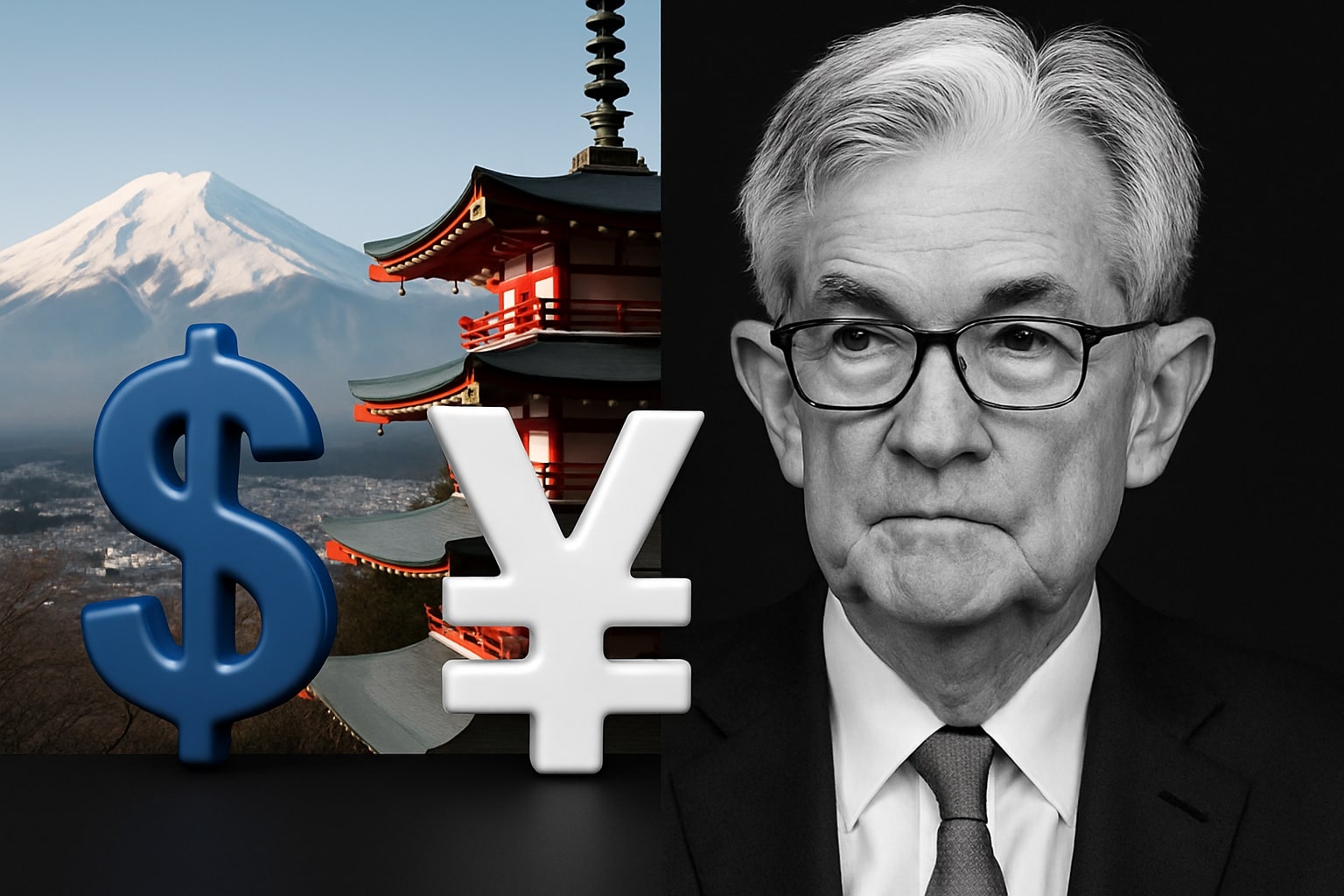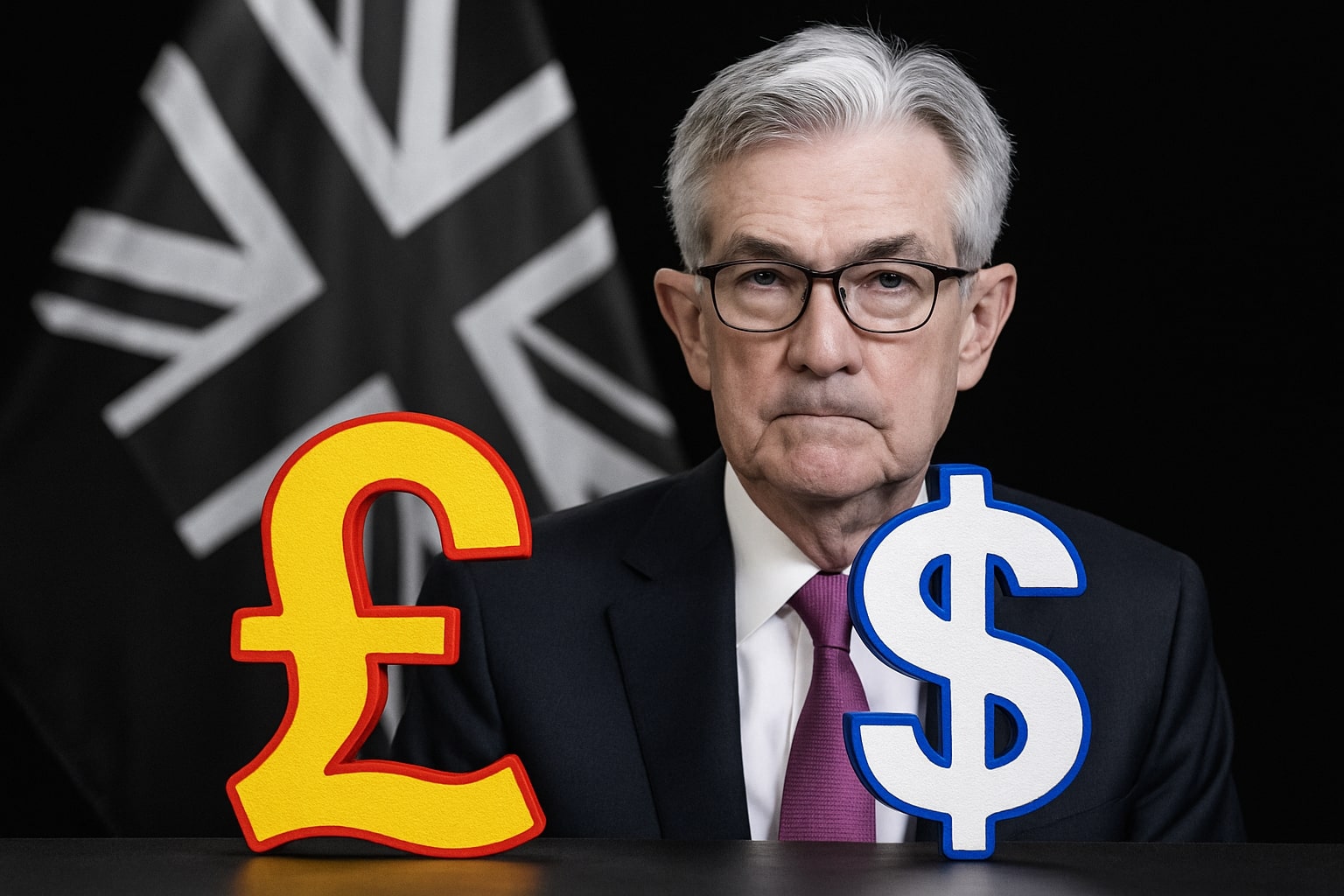
USD/JPY Price Forecast - USD to JPY at 147.93 as Fed Cut, Rising U.S. Yields, and BOJ Dissent Drive Volatility
Dollar-yen steadies after swinging between 145.47 and 149.12. Fed signals slower cuts, BOJ shows cracks in policy unity, Treasury yields climb, keeping FX traders on edge | That's TradingNEWS
USD/JPY Price Action Holds Near 147.93 After Fed Cut and BOJ Dissent Spark Volatility
USD/JPY closed the week around 147.93, recovering from an early dip to 145.47 as markets digested the Fed’s quarter-point cut and a rare Bank of Japan dissent that hinted at earlier tightening risk. The pair remains trapped between 145.47 support and 149.12 resistance, with technical signals showing indecision after the sharp swings tied to U.S. Treasury yields and BOJ commentary.
Fed Policy Shift and Treasury Yields Pressure USD/JPY Direction
The Federal Reserve reduced rates by 25 basis points, placing the funds rate at 4.00–4.25%, but its updated dot plot projects only two more cuts this year, disappointing investors expecting faster easing. Despite the cut, U.S. 10-year Treasury yields surged to 4.13%, the highest in two weeks, while 30-year yields climbed to 4.75%, tightening conditions. For USD/JPY, yield spreads remain crucial — with Japan’s overnight rate stuck near 0.5%, the wide gap still favors the dollar, yet any further BOJ shift could narrow that spread rapidly.
Read More
-
JEPQ ETF Holds $58.82 as Fund Flows Cool and Nasdaq Valuations Stretch
06.12.2025 · TradingNEWS ArchiveStocks
-
XRP ETFs Cross $1 Billion AUM as XRPI and XRPR Lead Institutional Wave
06.12.2025 · TradingNEWS ArchiveCrypto
-
Natural Gas Price Breakout: NG=F Soars to $5.50 on Cold U.S. Weather & LNG Export Boom
06.12.2025 · TradingNEWS ArchiveCommodities
-
USD/JPY Price Forecast - Dollar to yen Slides to 155.60, BOJ Hike Reprice Global Currency Markets
06.12.2025 · TradingNEWS ArchiveForex
Bank of Japan Signals Growing Internal Division on Policy
The yen gained intraday traction when one BOJ policymaker dissented against holding ultra-loose settings, marking a rare sign of internal pressure for earlier hikes. Japan still faces a heavy fiscal burden and sticky inflation, but even the hint of a shift put traders on alert. BOJ Governor Ueda remains cautious, but dissent has increased expectations of at least a 25 bp hike into year-end if wage pressures stay firm. That prospect leaves USD/JPY vulnerable if U.S. yields soften simultaneously.
Technical Landscape: Support at 145.47 and Resistance at 149.12 in Focus
Technically, USD/JPY’s rebound above 145.47 avoided a deeper breakdown. Bulls now eye a move toward 149.12, a resistance that if broken could retest 150.90, last year’s swing high. On the downside, a breach below 145.47 would resume the decline from the 150.90 peak, potentially dragging the pair toward 139.87, where the last corrective wave bottomed. Long-term structure suggests the uptrend from 102.58 (2021 low) remains intact unless the pair breaks decisively below 139.26, the 38.2% retracement of the 2021–2024 rally.
Dollar Index Recovery Adds Short-Term Support to USD/JPY
The U.S. Dollar Index (DXY) staged a rebound from 96.21 to 97.64, boosted by short covering after the Fed’s less dovish tone than markets had priced in. Resistance looms at 98.08–98.23, where new dollar selling could re-emerge. For USD/JPY, that means near-term stabilization around 147–148, but the bigger picture still shows dollar softness, especially if yields peak out and fiscal worries deepen.
Global Trade Deals and Macro Headwinds Add Layers to Yen Outlook
Recent U.S. trade accords with Europe and Japan cut tariffs from 30% to 15% and included a $550B Japanese investment pledge, reducing uncertainty but not reversing Japan’s structural challenges. Tokyo continues to juggle inflation pressures, low growth, and a wide trade gap with the U.S. If Japanese policymakers shift rates higher, USD/JPY could face a stronger downward correction. At the same time, U.S. deficits and fiscal overhang keep dollar strength fragile, giving the yen periodic safe-haven inflows when volatility spikes.
Medium-Term Bias: USD/JPY Balances Between Yield Gap and BOJ Risks
The battle lines for USD/JPY are clear: as long as U.S. yields stay elevated and BOJ remains cautious, the pair holds above 145 and leans toward 149–150 retests. But cracks in the BOJ’s stance, combined with the Fed’s measured cuts, set the stage for larger swings. With inflation still troubling both economies and fiscal imbalances rising, volatility is unlikely to fade.



















